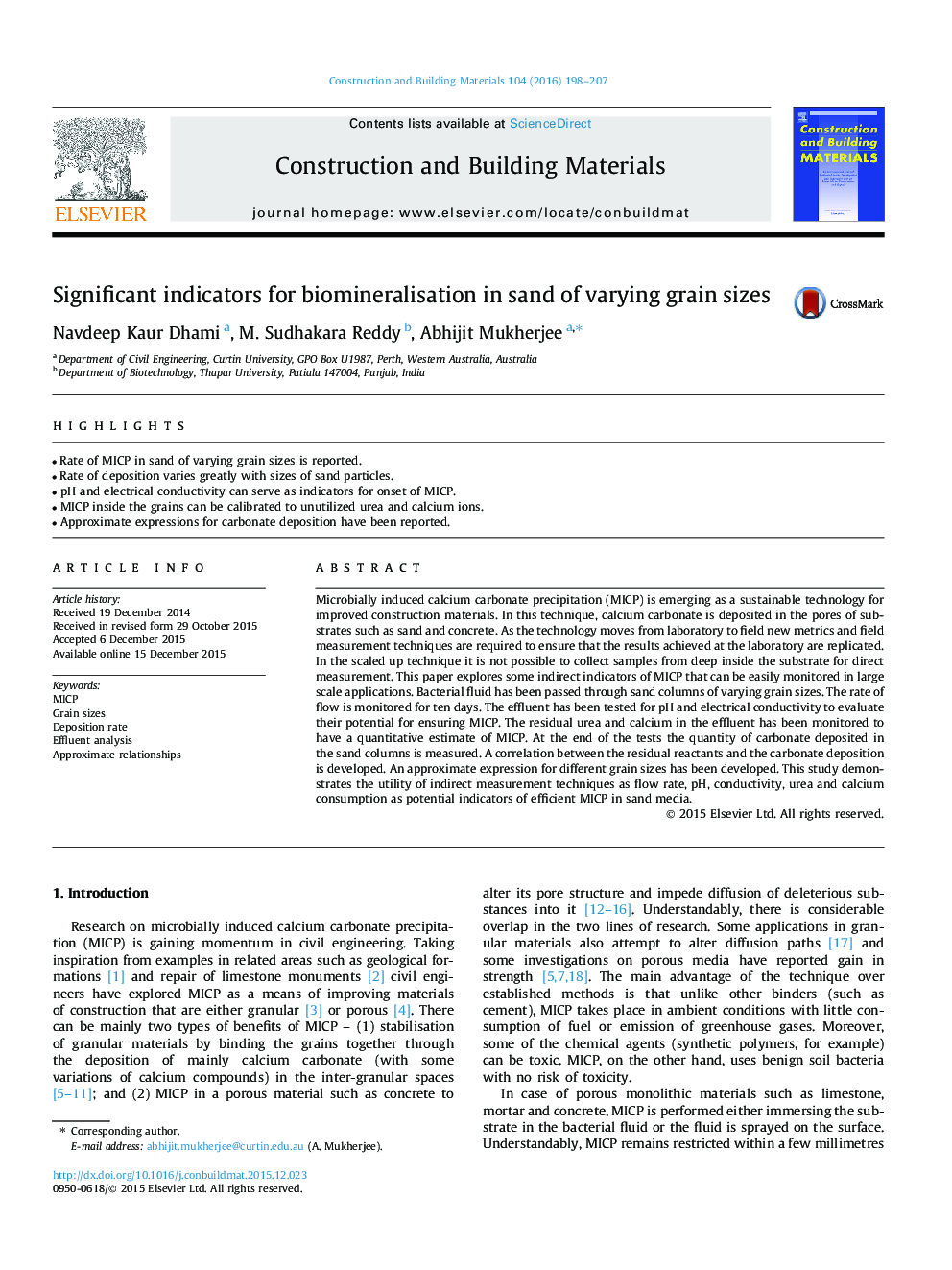| Article ID | Journal | Published Year | Pages | File Type |
|---|---|---|---|---|
| 256314 | Construction and Building Materials | 2016 | 10 Pages |
•Rate of MICP in sand of varying grain sizes is reported.•Rate of deposition varies greatly with sizes of sand particles.•pH and electrical conductivity can serve as indicators for onset of MICP.•MICP inside the grains can be calibrated to unutilized urea and calcium ions.•Approximate expressions for carbonate deposition have been reported.
Microbially induced calcium carbonate precipitation (MICP) is emerging as a sustainable technology for improved construction materials. In this technique, calcium carbonate is deposited in the pores of substrates such as sand and concrete. As the technology moves from laboratory to field new metrics and field measurement techniques are required to ensure that the results achieved at the laboratory are replicated. In the scaled up technique it is not possible to collect samples from deep inside the substrate for direct measurement. This paper explores some indirect indicators of MICP that can be easily monitored in large scale applications. Bacterial fluid has been passed through sand columns of varying grain sizes. The rate of flow is monitored for ten days. The effluent has been tested for pH and electrical conductivity to evaluate their potential for ensuring MICP. The residual urea and calcium in the effluent has been monitored to have a quantitative estimate of MICP. At the end of the tests the quantity of carbonate deposited in the sand columns is measured. A correlation between the residual reactants and the carbonate deposition is developed. An approximate expression for different grain sizes has been developed. This study demonstrates the utility of indirect measurement techniques as flow rate, pH, conductivity, urea and calcium consumption as potential indicators of efficient MICP in sand media.
